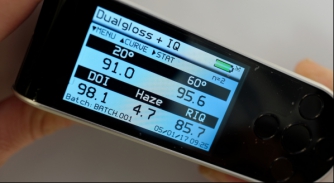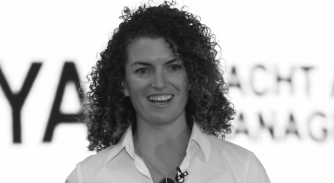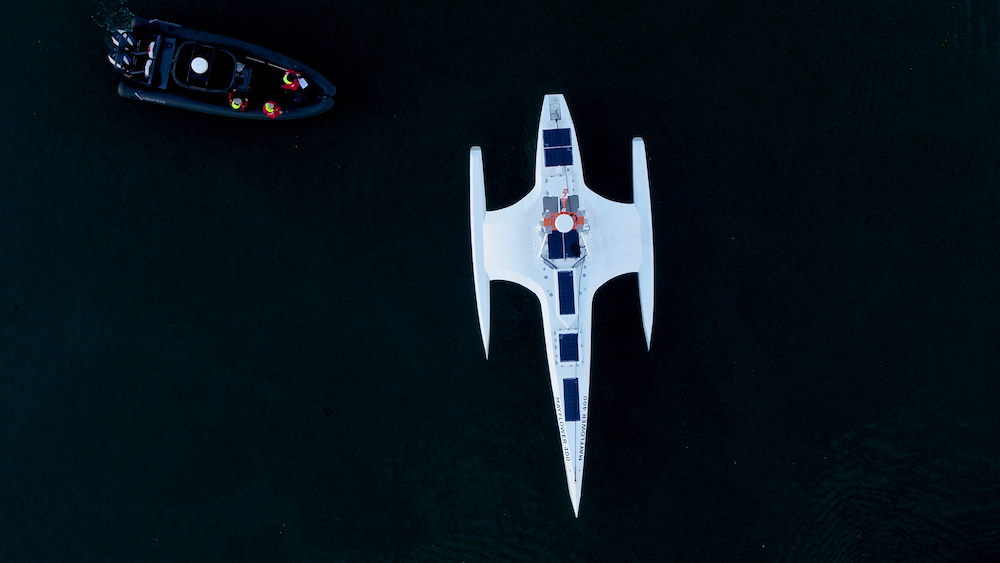Contact is key…but not too much
To what extent can superyachting reduce crew numbers without damaging the experience?
It is somewhat inevitable that in the future the operation of superyachts will be less reliant on traditional crew roles as various technologies get introduced that will make certain tasks redundant. In some idealised futures expressed by industry stakeholders there is a focus on reducing the number of crew members required to operate a superyacht, but is this really a future that the superyacht market should be hastening to welcome?
There are three key arguments for a reduction in the number of superyacht crew members on board any given superyacht. Firstly, people are fallible (this relates to all business/employee relationships). Secondly, they are expensive. Lastly, they take up a lot of space that could otherwise be used to improve the owner and/or guest experience.
Commonly, when issues occur on board, the route cause can be traced back to a mistake made by a person, hence the all too frequently used phrases ‘human error’ or ‘negligence’. The errors could be small, like making someone the wrong drink, or they could be huge, like overcharging a lithium-ion battery and causing a fire.
It has been suggested, for example, that in the future the making and delivery of drinks could be automated. Better yet, some AV/IT experts have suggested that superyachts will include predictive technology through which an owner’s favourite morning coffee might be ready for them and by their bed just as they begin to wake up. Trivial? Perhaps. Cool? Yes. Who wouldn’t want their coffee ready for them before they even knew they wanted one?
Various systems may adjust automatically to become optimal for any given day, whether that is lighting, air-conditioning, food and beverages, AV/IT and so on. Countless other everyday crew tasks could feasibly be completed by robots with advanced AI. Indeed, even those among us that are closer to the breadline than to buying a yacht of any size are already having our home experiences changed dramatically by AI and robotics.
In 2019, Patrick Lucas Austin, writing for Time, laid of the following vision: “It’s 6 A.M., and the alarm clock is buzzing earlier than usual. It’s not a malfunction: the smart clock scanned your schedule and adjusted because you’ve got that big presentation first thing in the morning. Your shower automatically turns on and warms to your preferred 103°F. The electric car is ready to go, charged by the solar panels or wind turbine on your roof. When you get home later, there’s an unexpected package waiting, delivered by drone. You open it to find cold medicine. Turns out, health sensors embedded in your bathroom detected signs of an impending illness and placed an order automatically. Good thing you already knocked that presentation out of the park.”
The vision that Austin laid out was for homes 10 years in the future (2029). While superyachts and homes are not perfectly analogous because of the unique challenges posed by life at sea, there are already superyachts out there that have integrated solar panels and one could easily replace the electric car with electric tenders – but why not have both?
Stepping back slightly from advanced service AI, a more present concern has been expressed by ETOs. Such has been the step-up in remote monitoring, some ETOs have raised concerns about ‘big-black-box syndrome’, where the amount they are able to contribute to maintaining and fixing certain systems has been severely hampered by the contemporary reliance on remote monitoring and shoreside solutions. How far will remote monitoring and maintenance progress and how might this affect the number of engineering and/or technical staff required on a superyacht?
On 15 June 2021, marine research non-profit ProMare attempted to cross the Atlantic with the crewless Mayflower Autonomous Ship (MAS400). The mission was halted after three days due to a glitch with the ship’s hybrid propulsion system prompting a decision to return to base. MAS400 is currently in dry dock in Turnchapel Wharf, Plymouth, UK, while ProMare’s team performs repairs and improvements. Regardless of MAS400’s failed mission, which was to navigate to Plymouth, Massachusetts, unmanned and unaided by any human intervention, the technology on board the vessel provides a glimpse of what we might find on superyachts in the future and will potentially rewrite what we understand of many superyacht roles.
“With no human captain or onboard crew, MAS uses the power of AI and automation to traverse the ocean in its quest for data and discovery. The ship’s AI Captain performs a similar role to a human captain. Assimilating data from a number of sources, it constantly assesses its route, status and mission, and makes decisions about what to do next. Cameras and computer vision systems scan the horizon for hazards, and streams of meteorological data reveal potentially dangerous storms. Machine learning and automation software ensure that decisions are safe and in line with collision regulations. Small, lightweight edge devices provide just enough local compute power for the ship to operate independently, even without connectivity or remote control. When a connection becomes available, the systems sync with the cloud, enabling updates and data upload,” explains the MAS400 team.
 MAS commences transatlantic crossing attempt
MAS commences transatlantic crossing attempt
The benefits conferred by these various technologies are many and varied. The ability to reduce costs, save space and negate errors of all shapes and sizes is clearly an attractive proposition. However, will running headlong into a world of automation actually have a negative impact on the superyacht experience?
Set aside for the moment the rational arguments for automation expressed above and consider one of the basic lessons that many of us learnt during the height of the pandemic. People, whether they are UHNWIs or otherwise, crave human contact, whether that is ordering a drink, discussing a route, complaining or finding someone to resolve an issue. Reducing the crew presence on superyachts as far as it is realistically possible will make them much quieter places, too quiet. It is hard to put a price on pleasant discourse and service with a smile.
Furthermore, as intelligent as AI will become, it is unlikely that it could possibly account for all the quirks and idiosyncrasies of every feasible guest. Yes, systems might learn what coffee the owner wants in the morning, as well as when and what temperature they would like their shower. But, surely, they will not be able, at least in the short-to-medium term future, to account for every whim and wish on the part of the guests, especially given how ridiculous we all know some of these requests can be.
It seems more likely that in the medium term, reductions in crew numbers will be most keenly welcomed in the technical departments. It is undeniable that technical teams contribute to the superyacht experience in the sense that they literally keep the vessel operational. However, if fewer crew members were required and new types of roles were created that covered the full scope of on board technology, would reduced numbers of technical experts dramatically impact the superyacht experience? Doubtful. And it’s not like they won’t exist, they will just be shore-based instead, as many already are.
It is largely accepted today that the role of the superyacht captain has evolved beyond being a mariner in the purest form. Captain’s today often complain about the burden of paperwork, their role as recruiters and asset managers, and a litany of other tasks that go beyond navigation, owner support and experience creation. If the future of navigation is automation, one can safely assume that within the same time period the administrative burden of operating a superyacht will also be reduced thanks to increasingly intelligent systems that apply AI, predictive maintenance and remote monitoring to automate safety checklists, calculate hours of rest, deal with customs clearance and all manner of aggravating yet essential tasks, allowing the captain’s role to devolve into an owner and guest-centric role once again.
At the end of the day, superyachting is a service-based industry and it is unlikely, even with monumental advancements in technology, that owners will be happy to give up on the elements of service that make the experience more enjoyable. While most will most likely happily assuage themselves of additional on board technical support, it may be that they choose to add permanents roles to their roster that focus on their passions, their businesses, their enjoyment and the superyacht lifestyle.
At The Superyacht Forum Live 2021, which will return to the RAI Amsterdam alongside METSTRADE in November, the programme will focus heavily on the future of the superyacht industry, casting a critical eye on the various ways in which the industry can improve to become more efficient, more sustainable and more attractive for a whole new generation of buyers.
If you would like to join us at The Superyacht Forum Live, join our community with an Executive Membership. As well as a delegate pass to The Superyacht Forum Live, you will have a subscription to the industry-leading Superyacht Report, the full library of back issues, complete access to all digital reporting, as well as a full subscription to the SuperyachtIntel database.
NEW: Sign up for SuperyachtNewsweek!
Get the latest weekly news, in-depth reports, intelligence, and strategic insights, delivered directly from The Superyacht Group's editors and market analysts.
Stay at the forefront of the superyacht industry with SuperyachtNewsweek
Click here to become part of The Superyacht Group community, and join us in our mission to make this industry accessible to all, and prosperous for the long-term. We are offering access to the superyacht industry’s most comprehensive and longstanding archive of business-critical information, as well as a comprehensive, real-time superyacht fleet database, for just £10 per month, because we are One Industry with One Mission. Sign up here.
Related news

Teaching old dogs new tricks
Nicola Kienzle, Co-founder of Metarina, discusses the need for digital solutions for age old issues
Technology

The Superyacht Owner Report
The latest edition of The Superyacht Report provides insight into how to optimise superyacht ownership, operation and lifecycle management
Owner

Inspect the uninspected
Amico & Co explores what vessel inspections entail and why they are conducted
Business

One to One – Mike Blake
Palladium’s Mike Blake explores supply chain issues and the future of superyacht technology
Technology

Diverse solutions create diverse problems
How will shipyards be made to adapt to superyachts becoming increasingly complex?
Technology

One to One – Jenny Matthews
Jenny Matthews, Co-founder of She of the Sea, speaks with Operations Editor Jack Hogan about diversity in the superyacht industry
Crew
Related news
Teaching old dogs new tricks
4 years ago
The Superyacht Owner Report
4 years ago
Inspect the uninspected
4 years ago
One to One – Mike Blake
4 years ago
Diverse solutions create diverse problems
4 years ago
One to One – Jenny Matthews
4 years ago
NEW: Sign up for
SuperyachtNewsweek!
Get the latest weekly news, in-depth reports, intelligence, and strategic insights, delivered directly from The Superyacht Group's editors and market analysts.
Stay at the forefront of the superyacht industry with SuperyachtNewsweek




